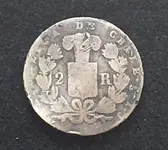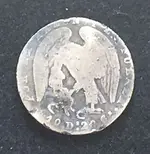HuntinDog
Bronze Member
105 here and to hot and dry to hunt, so thought I would look through some past finds.
Found this awhile back and always wondered about it.
I know it's a 2 Reale, but what date and where from? (Mex)
Any help is welcome.
Thanks
HH&GL
Found this awhile back and always wondered about it.
I know it's a 2 Reale, but what date and where from? (Mex)
Any help is welcome.
Thanks
HH&GL






